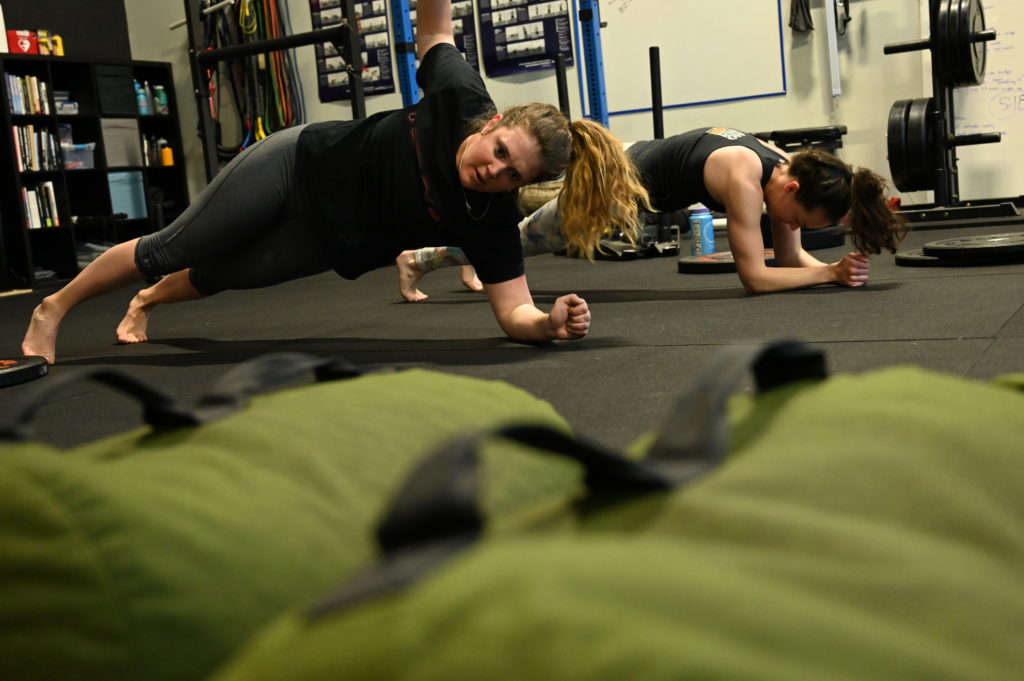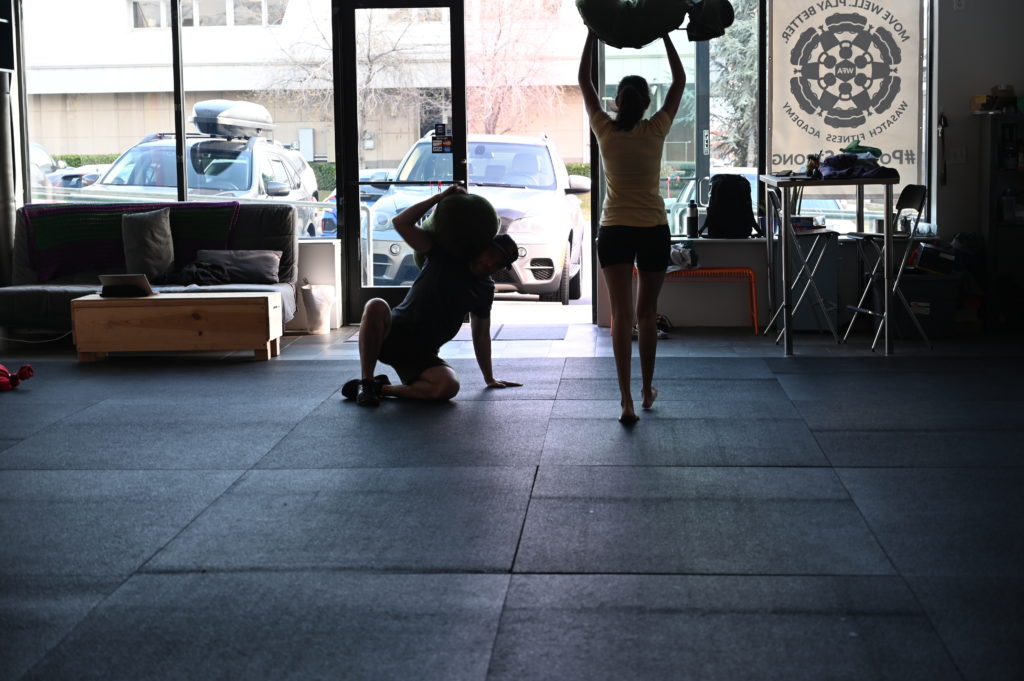Get stronger by connecting to your body.
What does it mean to feel strength? When you see someone who you would call strong, what do you see? Do they workout by lifting heavy weights? Do they move their body with ease? Do they look a certain way? Do they carry themselves a certain way when they walk? How do you judge strength? Do you just know it when you see it?
Do you know what strength looks like when you see it?
Or perhaps you judge strength by the ability to feel in control of your thoughts and actions. Or do you see strength as the ability to feel strong and confident when you need to protect your personal space.
When building strength, we’re not just talking about feeling the muscle fatigue build as you complete each rep. We’re not talking about going so hard that you’re so sore the next day you can’t move. We’re talking about finding strength by establishing a mind-body connection. This means feeling your muscles engage and support your physical structure.
Don’t chase soreness. Chase a mind-body connection.
This is about building a mind-body connection while you are performing each rep. Building a mind-body connection creates opportunities for you to take ownership of your body. When you have ownership of your body, your thoughts, your health, you’re willing to fight to take care of it. When you experience struggle, you can either identify with your weaknesses and stay the same, or you can take ownership of your abilities with intention to create your own opportunities.
Your ability to run for miles on end, climb to the peak of a mountain, or build strong muscles to support your posture, is founded upon the ability to connect to your body and then accomplish all of your aspirations because you have built your confidence to do so.
I’d like for your to identify reasons why you choose to strength train or why strength training is appealing to you. Do you strength train because you had a knee injury last ski season and you’re ready to try anything to get back on the hill? Or do you workout to quiet your thoughts, escape reality, to avoid feeling things? Do you view your workouts as your “healthier” addiction?
What’s your why? Let your intention dictate the path.
Take note of the reasons you choose to strength train and use those reasons as a foundation to build your goals. After you identify your reasons, take the next step and connect with your body.
When building your own mind-body connection, first start by bringing awareness to the way you communicate with yourself and others. What do you tell yourself on the way to the gym? What do you tell yourself while you’re working out? Are you even paying attention to what your body is doing or are you looking around the room trying to distract yourself from the task at hand?
If you notice that your mind is elsewhere during your workout bring your attention back to you and your goals.
Your challenge these next few weeks is to be present and attentive during your workout.
Let me be clear the intention of this challenge is not to take note of how your feeling for the day and then give yourself a break. For example you might want to say, “Today my body tells me that my legs hurt, so I’ll still go to the gym but I’ll sit on a bike for 40 minutes and zone out.”
This challenge is intended to help you find and create opportunities to connect with your body during a strength training session.
So let’s say that yesterday was a big leg day, yet you still want to go workout. Maybe your inner dialogue could be, “today when I go to the gym, I’ll start out on the bike for fifteen minutes. While on the bike I’m going to pay extra attention to my breathing pattern. If I notice that my breathing is too calm, that’ll be my indicator to speed things up a bit. If my breathing is hard, and my thoughts start to go elsewhere,I will stay present and feel the air come in and out of my lungs. If I feel better after my warm up I’ll go along with my programmed workout.”
When accepting this challenge you’re choosing to actively make decisions during your workouts. You have the ability to know when you can max out your efforts or when you need to take time to recover during a workout. You have the ability to use your muscles to support your structure so past injuries don’t have to be your limitations. Take this challenge as a way to listen to your body and to adjust your workout so you can continue to move forward.
When approaching your gym strength training workout, go in with a plan to feel a specific area of your body.
Say you want to build a strong deadlift. Some areas you can bring awareness to before you pick up heavy stuff are your core muscles, inner thigh and inner hamstring, mid- back and lats. Do this by finding some activation exercises also known as prehab work. To prepare for your prehab exercises I suggest you consider buying a variety pack Thera-band, mini-loop bands, and lightweight dumbbells. When deciding what type of resistance to use or how heavy the dumbbells should be, choose something that you will be able to perform between 15-20 reps with control yet it should be hard to get the last few reps in.
Once you have your equipment you can look up some prehab exercises to do before you start your workout. Remember, the goal here is to feel your muscles support your structure, not to max out. So, to prepare for your activation phase of your workout, find about three to four exercises that you feel would benefit from. Do each exercise about for fifteen to twenty reps for two sets each. You know when you are ready to move on to the next phase of your workout when you feel your core body temperature is elevated and you feel your muscles supporting your structure.
After you are sure you feel some muscle activation and you are in control of your body movements, get after it. Approach your strength work with confidence. When picking up heavy stuff or pushing it away from you, be present with yourself. Feel your muscles fire each rep from start to finish. When you can feel your strength, you can take ownership of your strength and your potential.
Stay present. THIS is the thing that matters. This moment.
Again your challenge is to stay present within your workout. You’re accepting this challenge because you are committed to building physical and mental strength, but building connection and also ownership your space. This is going to take some mental and physical effort. Find comfort to then dig deep and push your limits.
Movement awareness doesn’t end in the gym. When you’re connected to your body, you know your abilities. You are able to build your abilities to the point where you feel as though you have no limits. Connect with your body by building a strong foundation.

What is going to keep you moving is your ability to connect to your body. Try feeling your muscles truly activate and engage during your next workout, your next outdoor adventure. By feeling your muscles you’re being present in your body. When you are present with your body you can have the ability to appreciate the flow state of mind during your workout. When you’re present you have the opportunity to appreciate everything your body has done and will do for you.
Yours in peace, love, and strength.
-Chelsey

